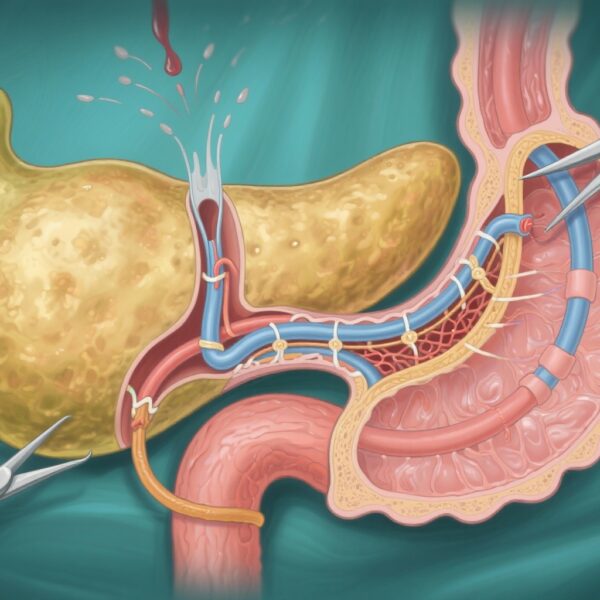Highlight
- Abnormal electroencephalogram (EEG) is the most consistent prognostic factor for seizure recurrence after a first unprovoked seizure.
- Abnormal neuroimaging, nocturnal seizures, family history of epilepsy, and Todd’s paresis may also increase recurrence risk but with lower certainty.
- Evidence quality is limited by study heterogeneity, methodological variability, and inconsistent definitions of prognostic factors.
- Standardized core outcome sets are needed to improve prognostic research and guide clinical decision-making and epilepsy diagnosis.
Study Background
Assessing seizure recurrence risk after a first unprovoked seizure remains a key clinical challenge. This evaluation profoundly influences patient counselling, treatment decisions, and lifestyle considerations such as driving and employment. The International League Against Epilepsy (ILAE) has now introduced a paradigm where epilepsy can be diagnosed operationally following a single unprovoked seizure if the individual’s risk of subsequent seizures is sufficiently high. Consequently, precise prognostic tools to stratify recurrence risk are imperative for informing this diagnostic threshold and guiding therapeutic interventions.
Study Design
This systematic review and meta-analysis incorporated 23 studies totaling 5918 participants, including both children and adults experiencing a first unprovoked seizure, seizure clusters within 24 hours, or a first status epilepticus episode irrespective of seizure type. The included studies—comprising 15 prospective cohorts, seven retrospective cohorts, and one randomized controlled trial—evaluated prognostic factors from the time of the initial seizure. Eligible studies reported associations between demographic parameters (e.g., age, sex), clinical features (e.g., seizure type), and investigation findings (e.g., EEG, brain imaging) with seizure recurrence over a minimum of six months’ follow-up (median 35 months, range 6–283 months). Quality assessments used the QUIPS tool, and evidence certainty was evaluated using an adapted GRADE framework.
Key Findings
Most notably, the presence of an abnormal EEG strongly predicted increased risk of seizure recurrence, with a pooled risk ratio (RR) of 1.90 (95% CI 1.60 to 2.25; moderate-certainty evidence) across nine studies involving 1904 participants. Hazard ratios (HR) from three studies (939 participants) likewise supported this association (HR 1.45, 95% CI 1.17 to 1.79) albeit with lower certainty due to heterogeneity and fewer data points.
Abnormal brain imaging, nocturnal seizure onset, positive family history of epilepsy, and Todd’s paresis were associated with elevated recurrence risks, but evidence was rated low to very low certainty because of study inconsistencies, imprecision, and variable methodologies:
- Abnormal brain imaging: RR 2.19 (95% CI 1.74 to 2.76), based on 4 studies (890 participants).
- Nocturnal seizures: HR 1.41 (95% CI 1.13 to 1.75; 3 studies, 967 participants) and RR 1.23 (95% CI 1.04 to 1.47; 4 studies, 1248 participants).
- Family history of epilepsy: RR 1.47 (95% CI 1.16 to 1.85; 6 studies, 1290 participants).
- Todd’s paresis: RR 1.48 (95% CI 1.02 to 2.13; 3 studies, 836 participants).
Several factors showed inconclusive or uncertain associations with seizure recurrence due to very low certainty of evidence, including febrile seizures, focal neurological deficits, status epilepticus at presentation, sex, focal seizure onset, and age under 16 years. Inconsistencies and study limitations curtailed definitive conclusions on these variables.
Expert Commentary
The findings underscore abnormal EEG as the most reliable clinical prognostic tool for recurrence risk assessment after a first unprovoked seizure, corroborating long-standing clinical practice. The association of abnormal neuroimaging with recurrence risk highlights the importance of detailed structural evaluation in initial assessments.
The moderate-to-high heterogeneity among studies reflects diverse participant populations, variable definitions of seizures and prognostic factors, and differences in anti-seizure medication use, introducing confounding effects. This variability challenges the reliability and generalizability of pooled estimates.
Current evidence limitations emphasize an urgent need for standardized definitions and core outcome sets in prognostic epilepsy research, facilitating meaningful comparisons and meta-analytic syntheses. Adherence to such frameworks would improve the precision of recurrence risk models, inform the operational epilepsy diagnosis after one seizure, and optimize individualized management plans.
Conclusion
This comprehensive review identifies abnormal EEG and potentially abnormal brain imaging, nocturnal seizures, family history of epilepsy, and Todd’s paresis as key prognostic indicators for recurrent unprovoked seizures in both pediatric and adult populations. Nevertheless, variable study quality and methodological heterogeneity temper certainty, underscoring the imperative for standardized research protocols.
Enhancing the prediction of seizure recurrence is paramount to guide timely diagnosis, therapeutic strategies, and social considerations. Future well-designed, standardized prognostic studies and clinical prediction tools will support personalized epilepsy care and facilitate clinical trial enrollment for interventions targeting seizure prevention and disease modification.
Funding and ClinicalTrials.gov
The analyzed systematic review was published as a Cochrane Database of Systematic Review (2025 Oct 10;10(10):CD013848) with no direct funding disclosed in the source meta-analysis. The review included data from clinical trial registries and a mixture of observational cohorts and one RCT. For updates and ongoing trials on epilepsy prognostication, ClinicalTrials.gov and the World Health Organization (WHO) International Clinical Trials Registry Platform are recommended resources.
References
Adan G, Neligan A, Nevitt SJ, Bonnett LJ, Sander JW, Marson AG. Prognostic factors predicting an unprovoked seizure recurrence in children and adults following a first unprovoked seizure. Cochrane Database Syst Rev. 2025 Oct 10;10(10):CD013848. doi: 10.1002/14651858.CD013848.pub2. PMID: 41070722; PMCID: PMC12512225.


